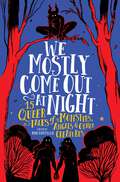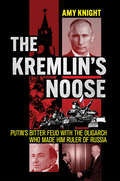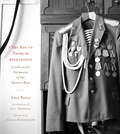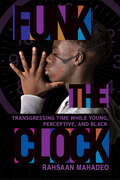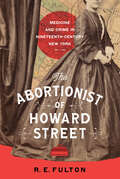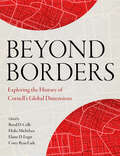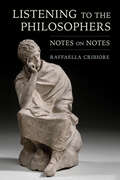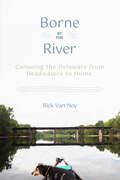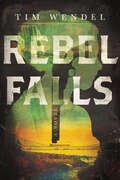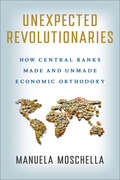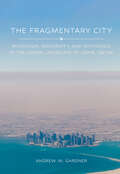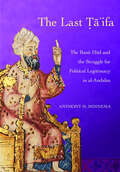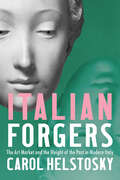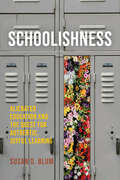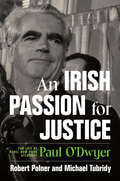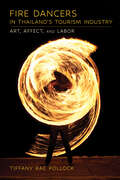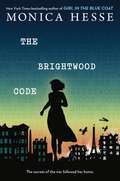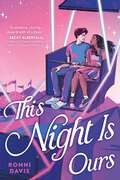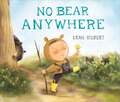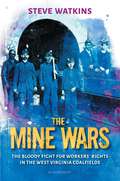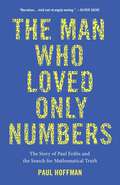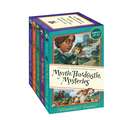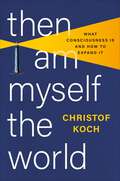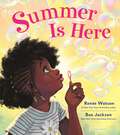- Table View
- List View
We Mostly Come Out at Night: 15 Queer Tales of Monsters, Angels & Other Creatures
by Rob CostelloAn empowering cross-genre YA anthology that explores what it means to be a monster, exclusively highlighting trans and queer authors who offer new tales and perspectives on classic monster stories and tropes. Be not afraid! These monsters, creatures, and beasties are not what they appear. We Mostly Come Out at Night is a YA anthology that reclaims the monstrous for the LGBTQA+ community while exploring how there is freedom and power in embracing the things that make you stand out. Each story centers on both original and familiar monsters and creatures—including Mothman, Carabosse, a girl with thirteen shadows, a living house, werebeasts, gorgons, sirens, angels, and many others—and their stories of love, self-acceptance, resilience, and empowerment. This collection is a bold, transformative celebration of queerness and the creatures that (mostly) go bump in the night. Contributors include editor Rob Costello, Kalynn Bayron, David Bowles, Shae Carys, Rob Costello, H.E. Edgmon, Michael Thomas Ford, Val Howlett, Brittany Johnson, Naomi Kanakia, Claire Kann, Jonathan Lenore Kastin, Sarah Maxfield, Sam J. Miller, Alexandra Villasante, and Merc Fenn Wolfmoor.
The Kremlin's Noose: Putin's Bitter Feud with the Oligarch Who Made Him Ruler of Russia (NIU Series in Slavic, East European, and Eurasian Studies)
by Amy KnightIn The Kremlin's Noose Amy Knight tells the riveting story of Vladimir Putin and the oligarch Boris Berezovsky, who forged a relationship in the early years of the Yeltsin era. Berezovsky later played a crucial role in Putin's rise to the Russian presidency in March 2000. When Putin began dismantling Boris Yeltsin's democratic reforms, Berezovsky came into conflict with the new Russian leader by reproaching him publicly. Their relationship quickly disintegrated into a bitter feud played out against the backdrop of billion-dollar financial deals, Kremlin in-fighting, and international politics. Dubbed the "Godfather of the Kremlin" by the slain Russian-American journalist Paul Klebnikov, Berezovsky was a successful businessman and media mogul who had an outsized role in Russia after 1991. Worth a reported $3 billion by 1997, Berezovsky engineered the reelection of Yeltsin as president in 1996 and negotiated an end to the 1995–96 Chechen war. Despite his own wealth, power, and influence, once he became Putin's enemy, Berezovsky was forced into exile in Britain, where he waged a determined campaign to topple Putin. Kremlin authorities responded with bogus criminal charges and demanded Berezovsky's extradition. Death threats soon followed. In March 2013, after losing a British court battle with another Russian oligarch, Berezovsky was found dead at his ex-wife's mansion outside London. Whether he died from suicide or murder remains a mystery.The Kremlin's Noose sheds crucial new light on the Kremlin's volatile politics under Yeltsin and Putin, helping us understand why democracy in Russia failed so badly. Knight provides a fascinating narrative of Putin's rise to power and his authoritarian rule, told through the prism of his relationship with Russia's once most powerful oligarch, Boris Berezovsky.
I Try Not to Think of Afghanistan: Lithuanian Veterans of the Soviet War (NIU Series in Slavic, East European, and Eurasian Studies)
by Anna ReichI Try Not to Think of Afghanistan includes photographs and commentaries from Lithuanian veterans of the Soviet War in Afghanistan (1979–89), addressing the lasting realities of war and its effects on those conscripted to fight. Unflinching first-person accounts give details of training, combat, and the often difficult return to society for military conscripts within the Soviet system. Anna Reich gives insight into the experiences of not only the Lithuanian veterans from the Soviet War in Afghanistan but also veterans from all countries who face similar struggles and challenges.For three months, Reich interacted with twenty-two veterans in their homes and meeting halls and throughout their daily routines to produce portraits that provide intimate and unvarnished portrayals of their lives and the lasting effects of forced military service in the Soviet army. Often ostracized socially because of their involvement with the Soviet army, the veterans frequently feel invisible: there are no social programs to assist them in their attempts to address post-traumatic stress disorder and assimilate into society, their cause is largely unknown, and the government responsible for their conscriptions no longer exists.I Try Not to Think of Afghanistan is the culmination of eight years of investigation into the psychological toll of war and trauma. In providing a rarely seen perspective of life after combat, the book intersects with contemporary discourse, specifically the way the US experience in Afghanistan closely mirrors that of the Soviets and the Russian Federation's forced conscription of young men to fight in Ukraine.
Funk the Clock: Transgressing Time While Young, Perceptive, and Black
by Rahsaan MahadeoFunk the Clock is about those said to be emblematic of the future yet denied a place in time. Hence, this book is both an invitation and provocation for Black youth to give the finger to the hands of time, while inviting readers to follow their lead.In revealing how time is racialized, how race is temporalized, and how racism takes time, Rahsaan Mahadeo makes clear why conventional sociological theories of time are both empirically and theoretically unsustainable and more importantly, why they need to be funked up/with. Through his study of a youth center in Minneapolis, Mahadeo provides examples of Black youth constructing alternative temporalities that center their lived experiences and ensure their worldviews, tastes, and culture are most relevant and up to date. In their stories exists the potential to stretch the sociological imagination to make the familiar (i.e., time) strange. Funk the Clock forges new directions in the study of race and time by upending what we think we know about time, while centering Black youth as key collaborators in rewriting knowledge as we know it.
The Abortionist of Howard Street: Medicine and Crime in Nineteenth-Century New York
by R.E. FultonJosephine McCarty had many identities. But in Albany, New York, she was known as "Dr. Emma Burleigh," the abortionist of Howard Street.On January 17, 1872, McCarty boarded a streetcar in Utica, New York, shot her ex-lover in the face, and disembarked, unaware that her bullet had passed through her target's head and into the heart of the innocent man sitting beside him. The unlucky passenger died within minutes. Josephine McCarty was arrested for attempted murder and quickly became the most notorious woman in central New York. The Abortionist of Howard Street was, however, far more than a murderer. In Maryland she was "Johnny McCarty," a blockade runner and spy for Confederate forces. New Yorkers whispered of her as a mistress to corrupt Albany politicians. So who was she?The prosecution in her murder trial claimed she was a calculating and heartless operative both in the bedroom and in her public life. Or was she the victim of ill fortune and the systemic weight of misogyny and male violence? The answer, of course, was not as simple as either narrative. In this absorbing and rich history, R.E. Fulton considers the nuances of Josephine McCarty's life from marriage to divorce, from financial abuse to quarrels with intimate partners and more, trying to decipher the truth behind the stories and myths surrounding McCarty and what ultimately led her to that Utica streetcar with a pistol in her dress pocket. In The Abortionist of Howard Street, Fulton revisites a rich history of women's experience in mid-nineteenth century America, revealing McCarty as a multifaceted, fascinating personification of issues as broad as reproductive health, education, domestic abuse, mental illness, and criminal justice.
Beyond Borders: Exploring the History of Cornell's Global Dimensions
by Royal D. Colle, Heike Michelsen, Elaine D. Engst and Corey Ryan EarleBeyond Borders highlights and celebrates Cornell University's many historical achievements in international activities going back to its founding. This collection of fifty-eight short chapters reflects the diversity, accomplishments, and impact of remarkable engagements on campus and abroad. These vignettes, many written by authors who played pivotal roles in Cornell's international history, take readers around the world to China and the Philippines with agricultural researchers, to Peru with anthropologists, to Qatar and India with medical practitioners, to Eastern Europe with economists and civil engineers, to Zambia and Sierra Leone with students and Peace Corps volunteers, and to many more places. Readers also will learn about Cornell's many international dimensions on campus, including the international studies and language programs and the library and museum collections. Beyond Borders captures how—by educating generations of global citizens, producing innovative research and knowledge, building institutional capacities, and forging mutually beneficial relationships—Cornell University has influenced positive change in the world.Beyond Borders was supported by CAPE (Cornell Academics and Professors Emeriti).
Listening to the Philosophers: Notes on Notes
by Raffaella CribioreListening to the Philosophers offers the first comprehensive look into how philosophy was taught in antiquity through a stimulating study of lectures by ancient philosophers that were recorded by their students. Raffaella Cribiore shows how the study of notes—whether Philodemus of Gadara's notes of Zeno's lectures in the first century BCE, or Arrian recording the Discourses of Epictetus in the second century CE, or the students of Didymus the Blind in the fourth century and Olympiodorus in the sixth century—can enable us to understand the methods and practices of what was an orally conducted education. By considering the pedagogical and mnemonic role of notetaking in ancient education, Listening to the Philosophers demonstrates how in antiquity the written and the spoken worlds were intimately intertwined.
Borne by the River: Canoeing the Delaware from Headwaters to Home
by Rick Van NoyAfter a near-fatal stroke and a separation, amidst a global pandemic, Rick Van Noy decided to go for a paddle. In Borne by the River, he charts the story of discovery, and healing that came from this solo canoe journey. Paddling two hundred miles on the Delaware River to his boyhood home just upriver from Trenton, New Jersey, Van Noy contemplates his fate and life, as well as the simple joy of sitting in a small boat floating down a large river with his dog, Sully.Deftly combining memoir, natural and local history, and engaging reportage of his encounters with other paddlers and river enthusiasts, including members of the Lenape Nation of Pennsylvania, Van Noy reveals deep and shifting layers of environmental, historical, cultural, and personal significance of the Delaware. Borne by the River reckons with the way that rivers braid into one's own life—thrilling rapids, eddying pauses, and life-changing rifts and falls. Van Noy rediscovers and shares how river journeys can scatter anxieties, wash away regrets, and recreate the spirit in its free-flowing currents.
Rebel Falls: A Novel
by Tim WendelWith Rebel Falls, Tim Wendel takes us to late summer of 1864. The Civil War rages on. Sherman is marching on Atlanta, while the armies of Grant and Lee battle across Virginia. In the North, war-weariness has made Lincoln's bid for reelection seem doubtful. As the fate of the nation "conceived in Liberty" hangs in the balance, Confederate agents gather in Niagara Falls to plan one last audacious maneuver to turn the tide of the conflict. Rory Chase, a capable yet haunted young woman eager to contribute to the Union cause, accepts a mission from the Secretary of State, William Seward, to travel to Niagara Falls and prevent two rebel spies, John Yates Beall and Bennet Burley, from seizing the U.S.S. Michigan on Lake Erie and bombarding Buffalo, Cleveland, and other northern cities to sow fear and disorder ahead of the upcoming election. To succeed, Rory must gain the rebel spies' trust and, with the help of the Underground Railroad network still operating out of the elegant Cataract House hotel overlooking the Falls, foil their desperate gambit. But can she maintain the pretense of being a Confederate sympathizer long enough to unravel Beall and Burley's ingenious plot?With actual events underpinning the tumultuous story in Rebel Falls, a forgotten chapter in the history of the Civil War is revealed. Far from frontlines, Wendel's exciting, character-driven narrative about a consequential struggle in the shadow of Niagara Falls' dramatic beauty is gripping from start to finish.
Unexpected Revolutionaries: How Central Banks Made and Unmade Economic Orthodoxy (Cornell Studies in Money)
by Manuela MoschellaIn Unexpected Revolutionaries, Manuela Moschella investigates the institutional transformation of central banks from the 1970s to the present. Central banks are typically regarded as conservative, politically neutral institutions that uphold conventional macroeconomic wisdom. Yet in the wake of the 2008 global financial crisis and the 2020 COVID-19 crisis, central banks have upended observer expectations by implementing largely unknown and unconventional monetary policies. Far from abiding by well-established policy playbooks, central banks now engage in practices such as providing liquidity support for a wide range of financial institutions and quantitative easing. They have even stretched the remit of monetary policy into issues such as inequality and climate change. Moschella argues that the political nature of central banks lies at the heart of these transformations. While formally independent, central banks need political support to justify their policies and powers, and to obtain it, they carefully manage their reputation among their audienceselected officials, market actors, and citizens. Challenged by reputational threats brought about by twenty-first-century recessionary and deflationary forces, central banks such as the Federal Reserve System and the European Central Bank strategically deviated from orthodox monetary policies to preempt or manage political backlash and to regain public trust. Central banks thus evolved into a new role only in coordination with fiscal authorities and on the back of public contestation. Eye-opening and insightful, Unexpected Revolutionaries is necessary reading for discussions on the future of the neoliberal macroeconomic regime, the democratic oversight of monetary policymaking, and the role that central banks canor cannotplay in our domestic economies.
The Fragmentary City: Migration, Modernity, and Difference in the Urban Landscape of Doha, Qatar
by Andrew M. GardnerAs Andrew M. Gardner explains in The Fragmentary City, in Qatar and elsewhere on the Arabian Peninsula, nearly nine out of every ten residents are foreign noncitizens. Many of these foreigners reside in the cities that have arisen in Qatar and neighboring states. The book provides an overview of the gulf migration system with its diverse migrant experiences. Gardner focuses on the ways that demography and global mobility have shaped the city of Doha and the urban characteristics of the Arabian Peninsula in general. Building on those migrant experiences, the book turns to the spatial politics of the modern Arabian city, exploring who is placed where in the city and how this social landscape came into historical existence. The author reflects on what we might learn from these cities and the societies that inhabit them. In The Fragmentary City, Andrew M. Gardner frames the contemporary cities of the Arabian Peninsula not as poor imitations of Western urban modernity, but instead as cities on the frontiers of a global, neoliberal, and increasingly urban future.
The Last Ta'ifa: The Banu Hud and the Struggle for Political Legitimacy in al-Andalus (Medieval Societies, Religions, and Cultures)
by Anthony H. MinnemaIn The Last Ta'ifa, Anthony H. Minnema shows how the Banu Hud, an Arab dynasty from Zaragoza, created and recreated their vision of an autonomous city-state (ta'ifa) in ways that reveal changes to legitimating strategies in al-Andalus and across the Mediterranean. In 1110, the Banu Hud lost control of their emirate in the north of Iberia and entered exile, ending their century-long rule. But far from accepting their fate, the dynasty adapted by serving Christian kings, nurturing rebellions, and carving out a new state in Murcia to recover, maintain, and grow their power. By tracing the Banu Hud across chronicles, charters, and coinage, Minnema shows how dynastic leaders borrowed their rivals' claims and symbols and engaged in similar types of military campaigns and complex alliances in an effort to cultivate authority. Drawing on Arabic, Latin, and vernacular sources, The Last Ta'ifa uses the history of the Banu Hud to connect the pursuit of legitimacy in al-Andalus to the politics of other emerging kingdoms and emirates. The actions of Hudid leaders, Minnema shows, echoed across the region as other kings, rebels, and adventurers employed parallel methods to gain power and resist the forces of centralization, highlighting the constructed nature of legitimacy in al-Andalus and the Mediterranean.
Italian Forgers: The Art Market and the Weight of the Past in Modern Italy
by Carol HelstoskyItalian Forgers takes an unorthodox approach to the fascinating topic of art forgery, focusing not on art forgery per se, but on the major forgery scandals that shifted the Italian art market in response to constant, and often intense, demand for Italian objects. By focusing on power dynamics that both precipitated forgery scandals and forged Italian cultural identities, this book connects the debates and discussions about three well-known Italian forgers—Giovanni Bastianini, Icilio Joni, and Alceo Dossena—to anchor and investigate the mechanics of the Italian art market from unification through the fascist era.Carol Helstosky examines foreign accounts of transactions and Italian writings about the art market. The actions and words of Italian dealers illustrate how the Italian art and antiquities market was an undeniably modern industry, on par with tourism in terms of its contribution to the Italian economy and to understandings of Italian identity. These accounts also reveal how dealers, artists, go-betweens, guides, and restorers worked to not only meet the intense demand for Italian products but also to develop highly sophisticated business practices to maintain financial stability and respond to shifts in demand consciously (but not always conscientiously).Italian Forgers weaves a compelling narrative about the history of Italian identity, forgery, and the value of the past. As a result, Helstosky brings historical perspective to the study of art forgery and art fraud. She reveals how historical circumstances and structural imbalances of cultural power shaped the market for art and antiquities and amplified incidents of art deception and forgery scandals.
Schoolishness: Alienated Education and the Quest for Authentic, Joyful Learning
by Susan D. BlumIn Schoolishness, Susan D. Blum continues her journey as an anthropologist and educator. The author defines "schoolishness" as educational practices that emphasize packaged "learning," unimaginative teaching, uniformity, constant evaluation by others, arbitrary forms, predetermined time, and artificial boundaries, resulting in personal and educational alienation, dependence, and dread.Drawing on critical, progressive, and feminist pedagogy in conversation with the anthropology of learning, and building on the insights of her two previous books Blum proposes less-schoolish ways of learning in ten dimensions, to lessen the mismatch between learning in school and learning in the wild. She asks, if learning is our human "superpower," why is it so difficult to accomplish in school? In every chapter Blum compares the fake learning of schoolishness with successful examples of authentic learning, including in her own courses, which she scrutinizes critically.Schoolishness is not a pedagogical how-to book, but a theory-based phenomenology of institutional education. It has moral, psychological, and educational arguments against schoolishness that, as Blum notes, "rhymes with foolishness."
An Irish Passion for Justice: The Life of Rebel New York Attorney Paul O'Dwyer
by Robert Polner Michael TubridyAn Irish Passion for Justice reveals the life and work of Paul O'Dwyer, the Irish-born and quintessentially New York activist, politician, and lawyer who fought in the courts and at the barricades for the rights of the downtrodden and the marginalized throughout the 20th century.Robert Polner and Michael Tubridy recount O'Dwyer's legal crusades, political campaigns, and civic interactions, deftly describing how he cut a principled and progressive path through New York City's political machinery and America's reactionary Cold War landscape. Polner and Tubridy's dynamic, penetrating depiction showcases O'Dwyer's consistent left-wing politics and defense of accused Communists in the labor movement, which exposed him to sharp criticism within and beyond the Irish-American community. Even so, his fierce beliefs, loyalty to his brother William, who was the city's mayor after World War II, and influence in Irish-American circles also inspired respect and support. Recognized by his gentle brogue and white pompadour, he fought for the creation of Israel, organized Black voters during the Civil Rights movement, and denounced the Vietnam War as an insurgent Democratic candidate for US Senate. Finally, he enlisted future president Bill Clinton to bring an end to the Troubles in Northern Ireland. As the authors demonstrate, O'Dwyer was both a man of his time and a politician beyond his years.An Irish Passion for Justice tells an enthralling and inspiring New York immigrant story that uncovers how one person, shaped by history and community, can make a difference in the world by holding true to their ideals.
Fire Dancers in Thailand's Tourism Industry: Art, Affect, and Labor
by Tiffany Rae PollockFire Dancers in Thailand's Tourism Industry explores the evolution of fire dancing from informal community jam sessions into the iconic, tourist-oriented performances at beach parties and bars, through a close consideration of the role of affect in the lives of fire dancers in the ever-changing scene. Rather than pursuing the common notion that tourism industries are exploitative enterprises that oppress workers, Tiffany Rae Pollock centers the perspectives of fire artists themselves, who view the industry as simultaneously generative and destructive. Dancers reveal how they employ affect to navigate their lives, art, and labor in this context, showcasing how affect is not only a force that acts on people but also is used and shaped by social actors toward their own ends. Fire Dancers in Thailand's Tourism Industry highlights men as affective laborers, investigating how they manage the eroticization of their identities and the intersections of art and labor in tourist economies. Exploring moments of performance and everyday life, Pollock examines how fire artists reimagine their labor, lives, and communities in Thailand's tourism industry.
The Brightwood Code
by Monica HesseIn a breathless, haunting, and rich historical mystery, New York Times bestselling author Monica Hesse speaks to the depths of trauma and the power of memory. Seven months ago, Edda was on the World War I front lines as one of two hundred &“Hello Girls,&” female switchboard operators employed by the US Army. She spent her nights memorizing secret connection codes to stay ahead of spying enemies, and her days connecting vital calls between platoons and bases and generals, all trying to survive—and win—a brutal war. Their lives were in Edda&’s hands, and one day, in fateful seconds, everything went wrong. Now, Edda is back in Washington, DC, working as an American Bell Telephone operator, the picture of respectability. But when her shift ends, Edda is barely hanging on, desperate to forget the circumstances that cut her time overseas short. When Edda receives a panicked phone call from someone who utters the fateful code word &“Brightwood,&” she has no choice but to confront her past. With precious few clues and help only from Theo, a young man bearing his own WWI scars, Edda races to uncover what secrets may have followed her across the ocean. Timely and unforgettable,The Brightwood Code sheds light on hidden history and the brutality of being a woman in a war built by men.
This Night Is Ours
by Ronni Davis&“Ronni Davis perfectly captures the terrifying joy of shaking off others&’ expectations and coloring in your own future—a sensitive, stirring, deep breath of a book.&” —Becky Albertalli, #1 New York Times bestselling authorFor one teen girl, the summer before college brings uncertainty about the future and a budding romance—perfect for fans of Nicola Yoon! It&’s the longest day of the year, and eighteen-year-old Brandy Bailey has just received the worst news of her life: She&’s been accepted to a top nursing school, making her mother overwhelmingly proud. The thing is, Brandy wants to be an artist. She knows all the risks of chasing her dream. She&’s heard them from her mother time and time again. Plus, Brandy&’s annoying classmate from high school, the annoyingly handsome Ben Nolan, is catching his far-fetched dream of being an actor. Why does he get to be fearless while she has to be practical? Ben is the last thing Brandy wants on her mind, so of course today is the day he decides to glue himself to her hip. Now his perfect face is right there in the cacophony crashing through her head. Swirling in too many directions, Brandy&’s emotions clash with the flashing lights at the town&’s summer carnival. Can she have one extraordinary night before everything changes? Ronni Davis spins a whirlwind summer romance full of cotton candy, funnel cake, and the sweetness of first love. Don't miss:When the Stars Lead to You
No Bear Anywhere
by Leah GilbertA young boy learns to cope with disappointment and embrace the unexpected in this infectiously charming, beautifully illustrated picture book.When his family takes a walk on Bear Creek Trail, Bruin is determined to spot his favorite animal (a bear). Before too long, he notices something! It's a . . . pinecone! Not a bear, but that's okay. A few minutes later, Bruin stops again: He's seen a . . . flower! No bear anywhere, but there's still plenty of time. Eventually, they make it all the way to the . . . cave! But when there is no bear anywhere in the cave, Bruin is as sad as could be. Can he turn his day around, even when there's no bear? Or, wait a minute-was a bear there, after all?! Leah Gilbert's gorgeous art shines in this playful and charming story about finding wonder and joy in the world around us, even when life takes unexpected turns.
No Bear Anywhere
by Leah GilbertA young boy learns to cope with disappointment and embrace the unexpected in this infectiously charming, beautifully illustrated picture book.When his family takes a walk on Bear Creek Trail, Bruin is determined to spot his favorite animal (a bear). Before too long, he notices something! It's a . . . pinecone! Not a bear, but that's okay. A few minutes later, Bruin stops again: He's seen a . . . flower! No bear anywhere, but there's still plenty of time. Eventually, they make it all the way to the . . . cave! But when there is no bear anywhere in the cave, Bruin is as sad as could be. Can he turn his day around, even when there's no bear? Or, wait a minute-was a bear there, after all?! Leah Gilbert's gorgeous art shines in this playful and charming story about finding wonder and joy in the world around us, even when life takes unexpected turns.
The Mine Wars: The Bloody Fight for Workers' Rights in the West Virginia Coalfields
by Steve WatkinsFor fans of Steve Sheinkin and Deb Heiligman, a riveting true story of the West Virginia coal miners who ignited the largest labor uprising in American history.In May of 1920, in a small town in the mountains of West Virginia, a dozen coal miners took a stand. They were sick of the low pay in the mines. The unsafe conditions. The brutal treatment they endured from mine owners and operators. The scrip they were paid-instead of cash-that could only be used at the company store.They had tried to unionize, but the mine owners dug in. On that fateful day in May 1920, tensions boiled over and a gunfight erupted-beginning a yearlong standoff between workers and owners.The miners pleaded, then protested, then went on strike; the owners retaliated with spying, bribery, and threats. Violence escalated on both sides, culminating in the 1921 Battle of Blair Mountain, the largest labor uprising in United States history.In this gripping narrative nonfiction book, meet the resolute and spirited people who fought for the rights of coal miners, and discover how the West Virginia Mine Wars paved the way for vital worker protections nationwide. More than a century later, this overlooked story of the labor movement remains urgently relevant.
The Man Who Loved Only Numbers: The Story of Paul Erdos and the Search for Mathematical Truth
by Paul Hoffman"A funny, marvelously readable portrait of one of the most brilliant and eccentric men in history." --The Seattle Times Paul Erdos was an amazing and prolific mathematician whose life as a world-wandering numerical nomad was legendary. He published almost 1500 scholarly papers before his death in 1996, and he probably thought more about math problems than anyone in history. Like a traveling salesman offering his thoughts as wares, Erdos would show up on the doorstep of one mathematician or another and announce, "My brain is open." After working through a problem, he'd move on to the next place, the next solution. Hoffman's book, like Sylvia Nasar's biography of John Nash, A Beautiful Mind, reveals a genius's life that transcended the merely quirky. But Erdos's brand of madness was joyful, unlike Nash's despairing schizophrenia. Erdos never tried to dilute his obsessive passion for numbers with ordinary emotional interactions, thus avoiding hurting the people around him, as Nash did. Oliver Sacks writes of Erdos: "A mathematical genius of the first order, Paul Erdos was totally obsessed with his subject--he thought and wrote mathematics for nineteen hours a day until the day he died. He traveled constantly, living out of a plastic bag, and had no interest in food, sex, companionship, art--all that is usually indispensable to a human life."The Man Who Loved Only Numbers is easy to love, despite his strangeness. It's hard not to have affection for someone who referred to children as "epsilons," from the Greek letter used to represent small quantities in mathematics; a man whose epitaph for himself read, "Finally I am becoming stupider no more"; and whose only really necessary tool to do his work was a quiet and open mind. Hoffman, who followed and spoke with Erdos over the last 10 years of his life, introduces us to an undeniably odd, yet pure and joyful, man who loved numbers more than he loved God--whom he referred to as SF, for Supreme Fascist. He was often misunderstood, and he certainly annoyed people sometimes, but Paul Erdos is no doubt missed. --Therese Littleton
Myrtle Hardcastle Mysteries Digital Collection
by Elizabeth C. BuncePerfect for fans of Enola Holmes and Agatha Christie: an amateur detective obsessed with crime scene analysis investigates her sleepy village town in the Edgar Award-Winning series, now available for the first time in a complete paperback gift set! This highly acclaimed, Edgar Award-winning series features twelve-year-old Myrtle Hardcastle, Amateur Detective, who has a passion for justice and a Highly Unconventional obsession with criminal science. Armed with her father's law books and her mum's microscope, Myrtle keeps abreast of the latest developments in crime scene analysis and Observes her neighbors in the quiet village of Swinburne, England (often to their chagrin). In this complete paperback set, Myrtle, her governess, and her precocious cat Peony take on swindlers, murderers, and the occasional ghost, earning Myrtle a place among the most daring amateur detectives of her time. Join Myrtle as she puts her sparkling wit and nose for murder to the test in five thrilling investigations: Premeditated Myrtle How To Get Away With Myrtle Cold-Blooded Myrtle In Myrtle Peril Myrtle, Means, and Opportunity
Then I Am Myself the World: What Consciousness Is and How to Expand It
by Christof Koch"Deeply personal and infinitely digestible, Then I Am Myself the World is a remarkable must-read for anyone interested in knowing their mind.&”―Judson Brewer MD, PhD, New York Times–bestselling author of Unwinding Anxiety The world&’s leading investigator of consciousness argues that by understanding what consciousness does—cause change in the world—we can understand its origins and its future In Then I Am Myself the World, Christof Koch explores the only thing we directly experience: consciousness. At the book&’s heart is integrated-information theory, the idea that the essence of consciousness is the ability to exert causal power over itself, to be an agent of change. Koch investigates the physical origins of consciousness in the brain and how this knowledge can be used to measure consciousness in natural and artificial systems. Enabled by such tools, Koch reveals when and where consciousness exists, and uses that knowledge to confront major social and scientific questions: When does a fetus first become self-aware? Can psychedelic and mystical experiences transform lives? What happens to consciousness in near-death experiences? Why will generative AI ultimately be able to do the very thing we can do, yet never feel any of it? And do our experiences reveal a single, objective reality? This is an essential book for anyone who seeks to understand ourselves and the future we are creating.
Summer Is Here
by Ms Renée WatsonNew York Times bestselling creators Renée Watson and Bea Jackson offer a picture book ode to a picture-perfect summer day, from sunrise to sunset.Summer is here!No dark clouds in the sky, it's a perfect day for play. What joy will summer bring me today?Summer is finally here, and she's bringing the most perfect day! From sunup to sundown, there's so much to do on this lovely summer day. With summer comes fresh fruit, sweet and tangy, jump ropes for leaping and dancing, and friends at the pool swimming and floating. Summer brings family cookouts under shady trees, gardens overflowing, and the familiar song of the ice-cream truck. This beautiful ode to all the season's sensations follows one girl's perfect day in an exploration of joy, family, friendship, sunshine, and wonder.Her stars shimmer like spilled glitter across the sky. I whisper a wish and say goodbye to the day.I wish summer would stay.Renée Watson celebrates iconic childhood joys in this love letter to summer featuring bright, sun-drenched art from Bea Jackson.
